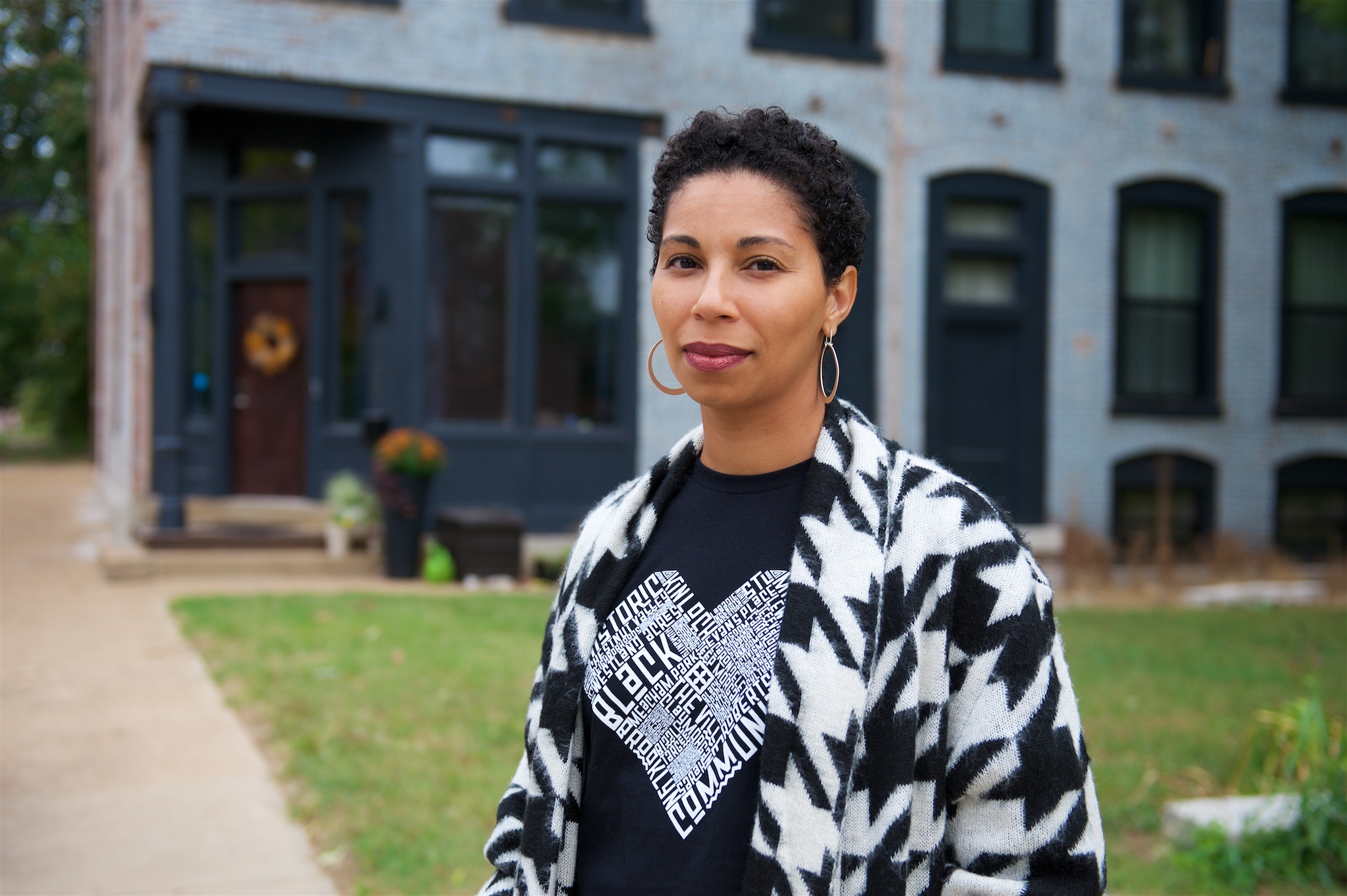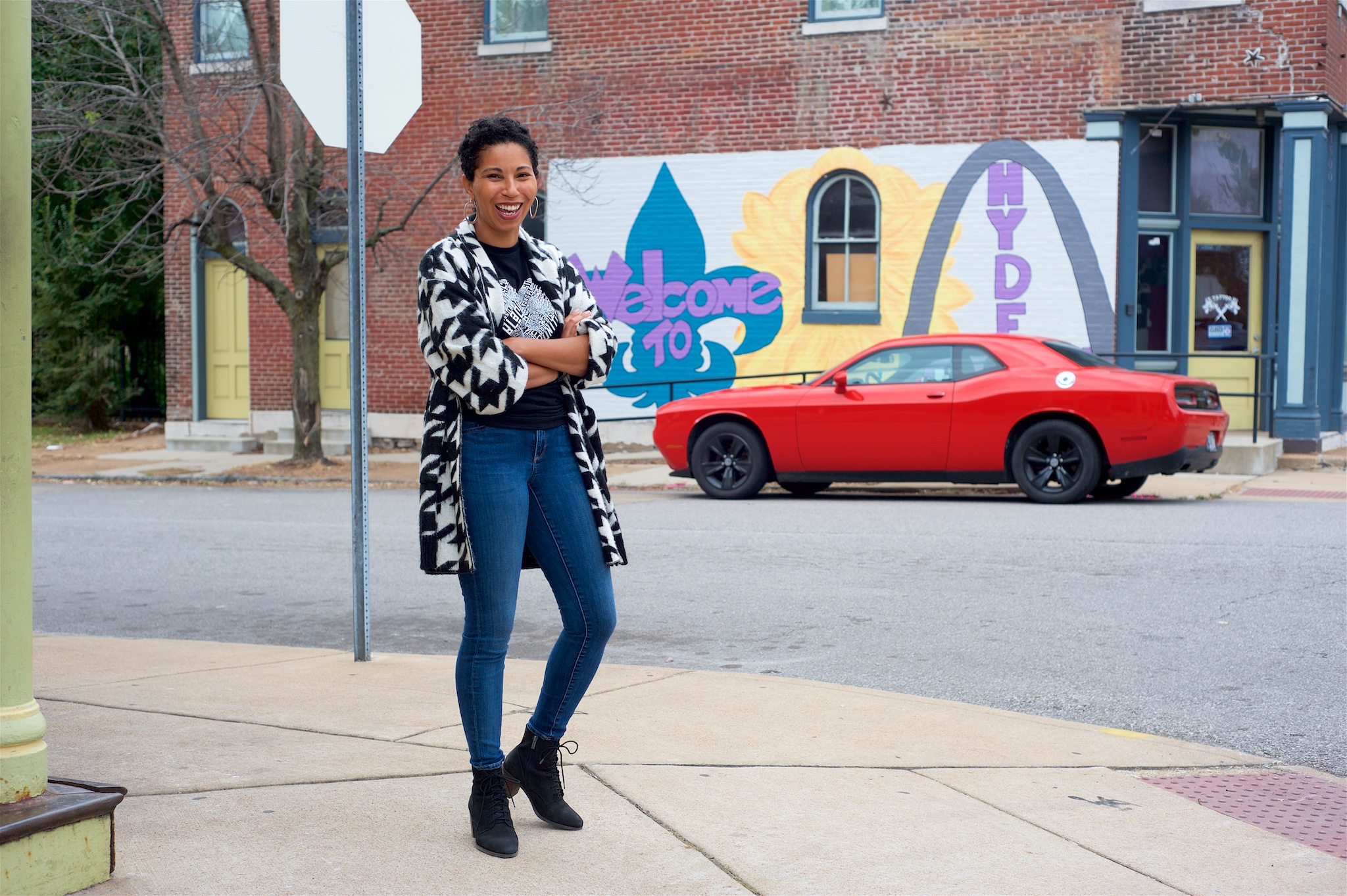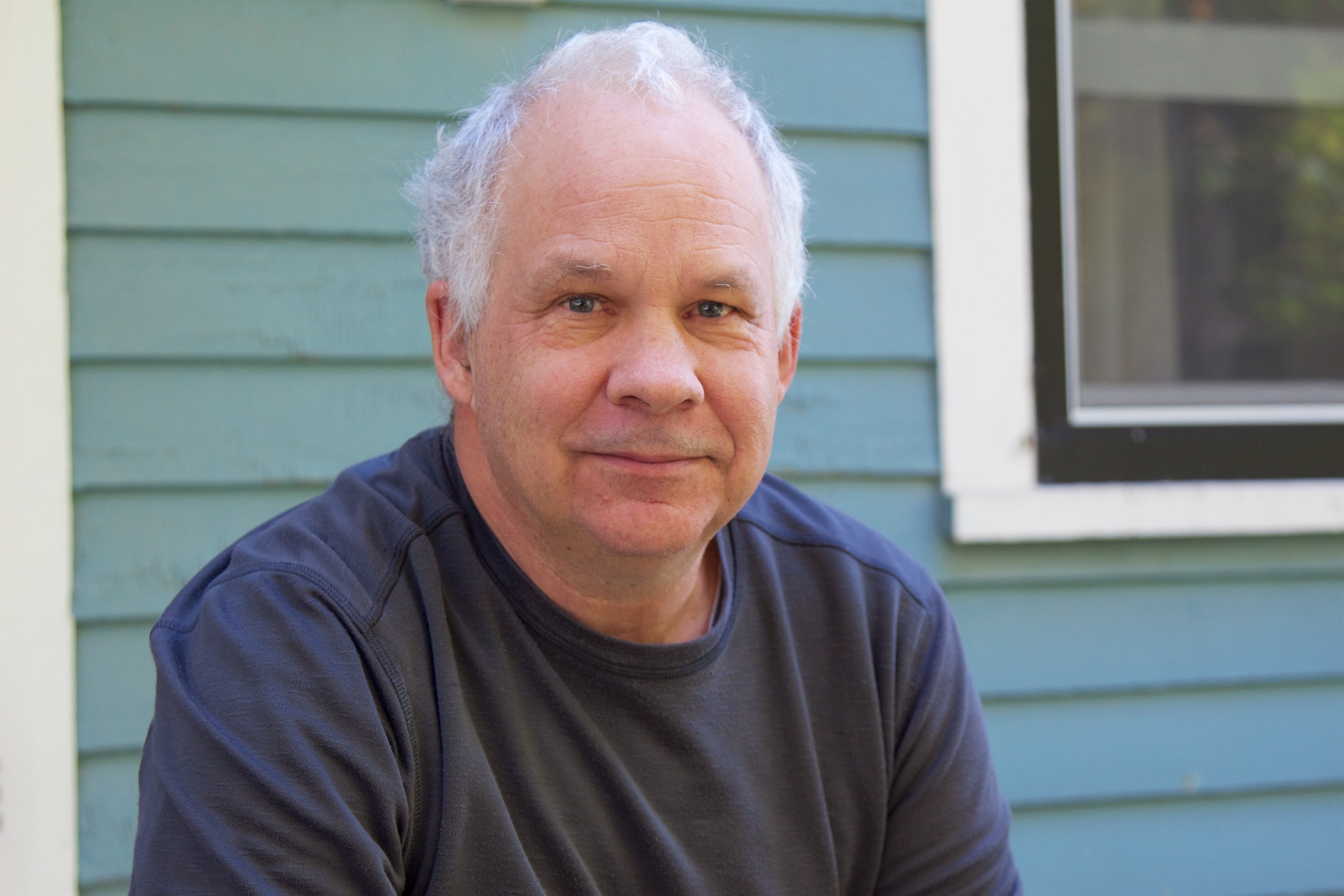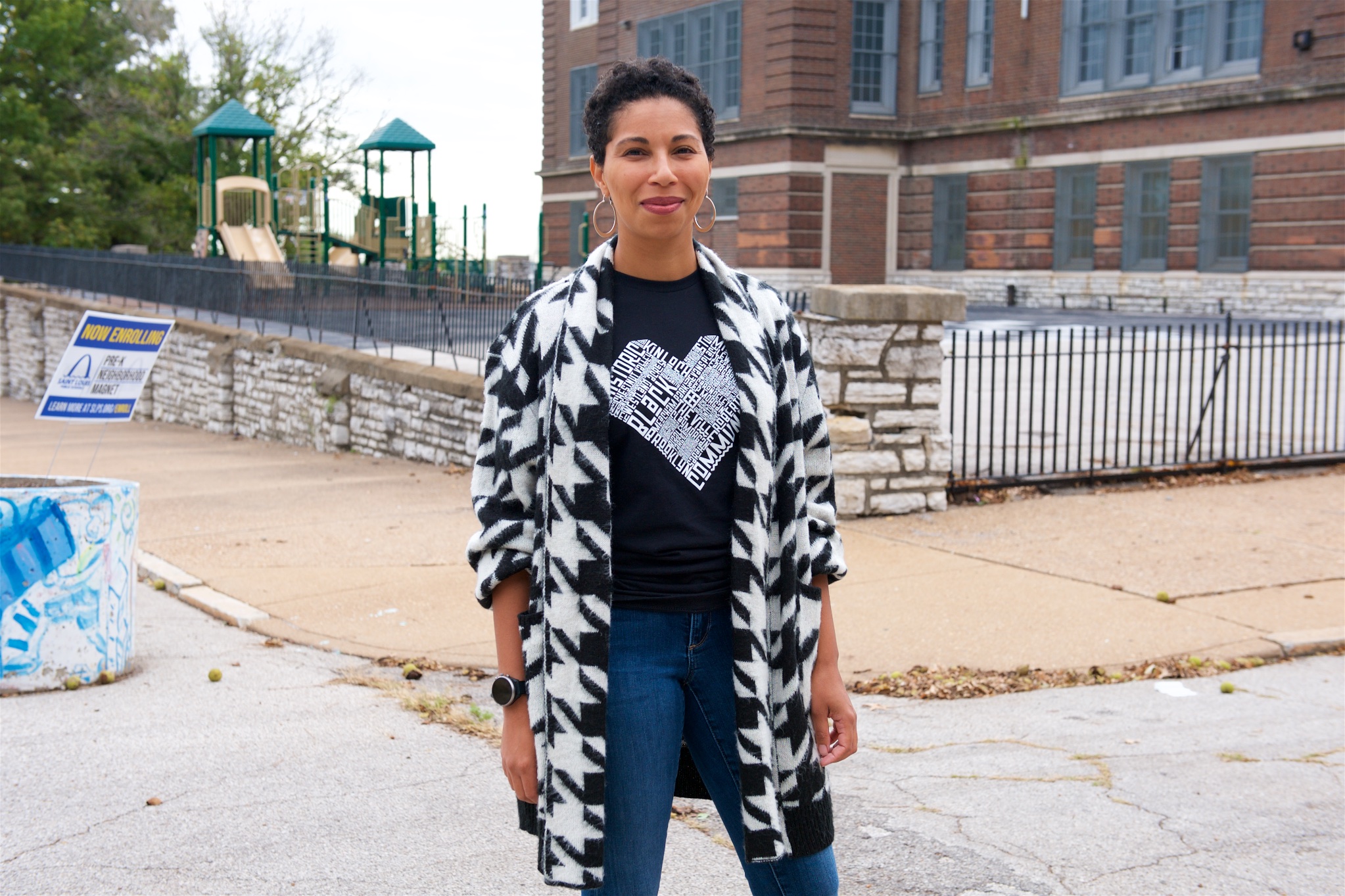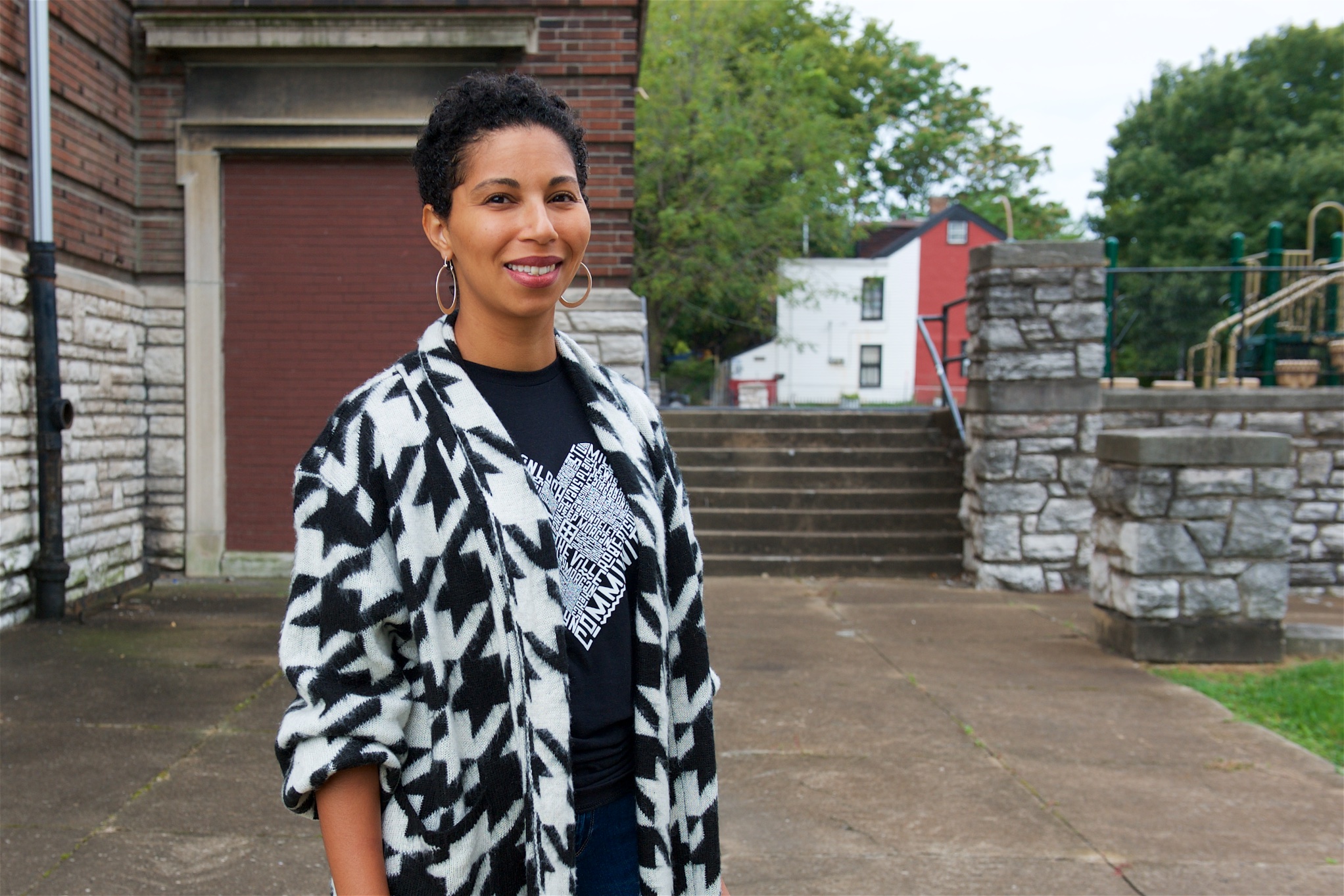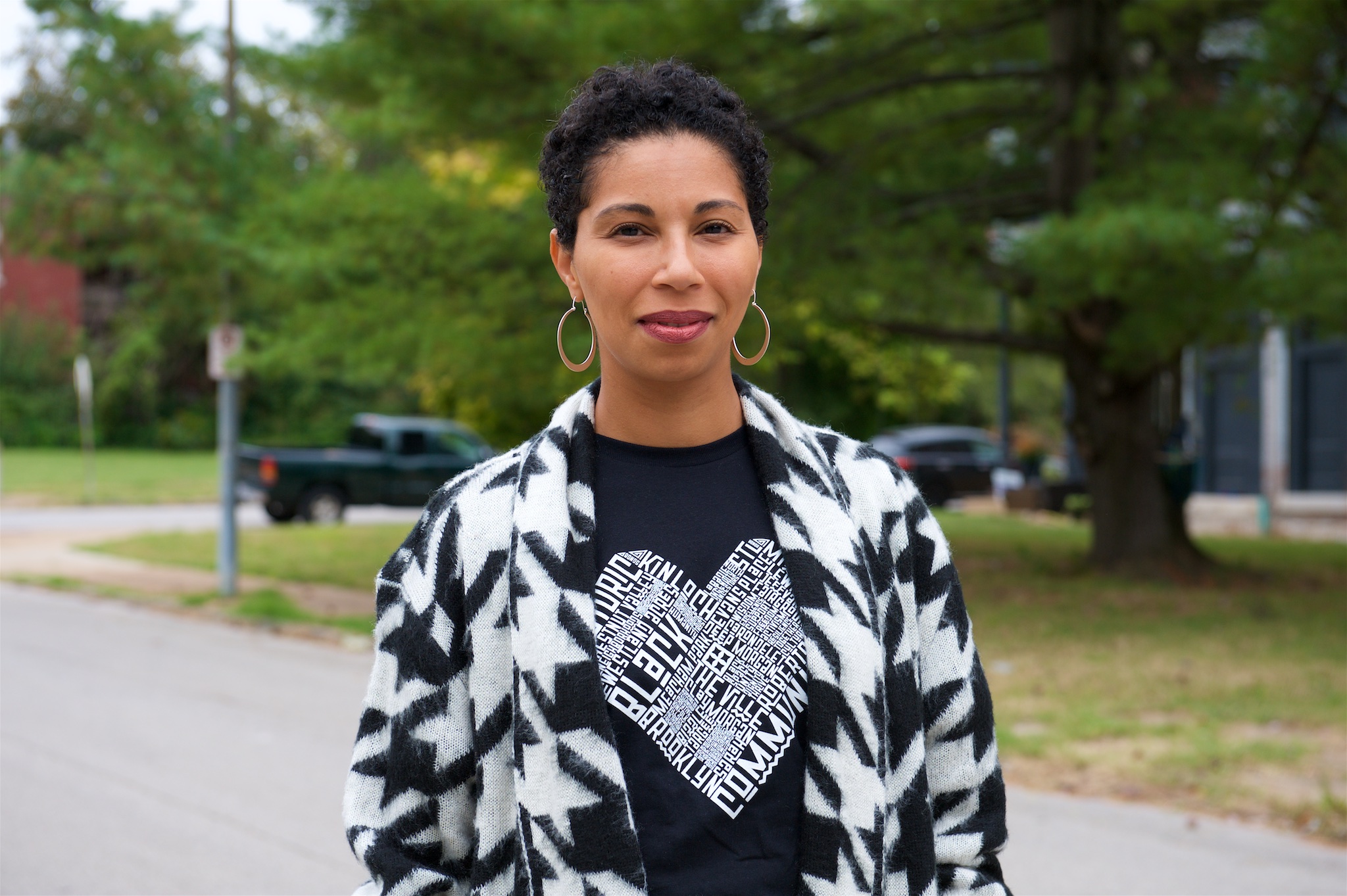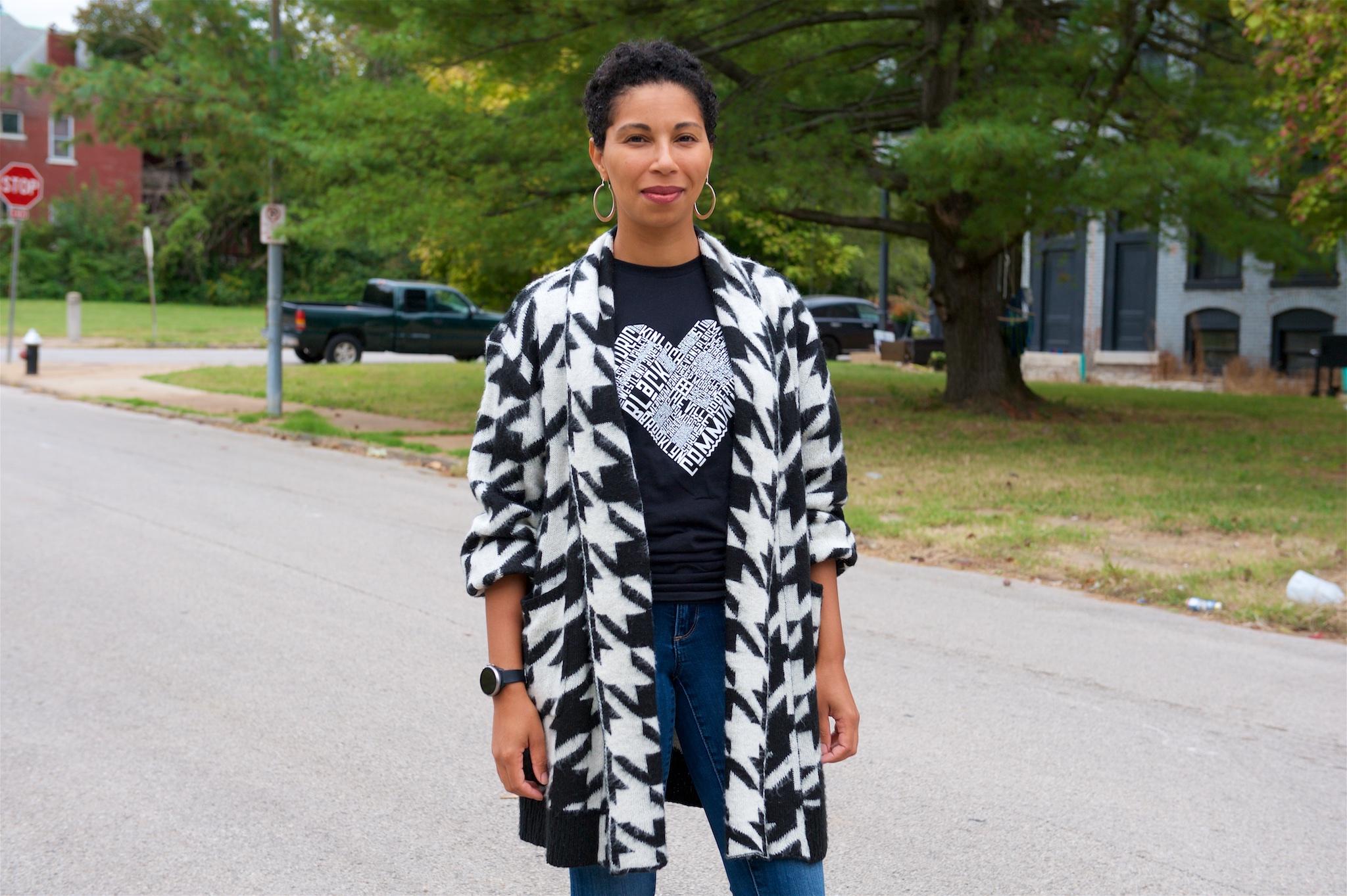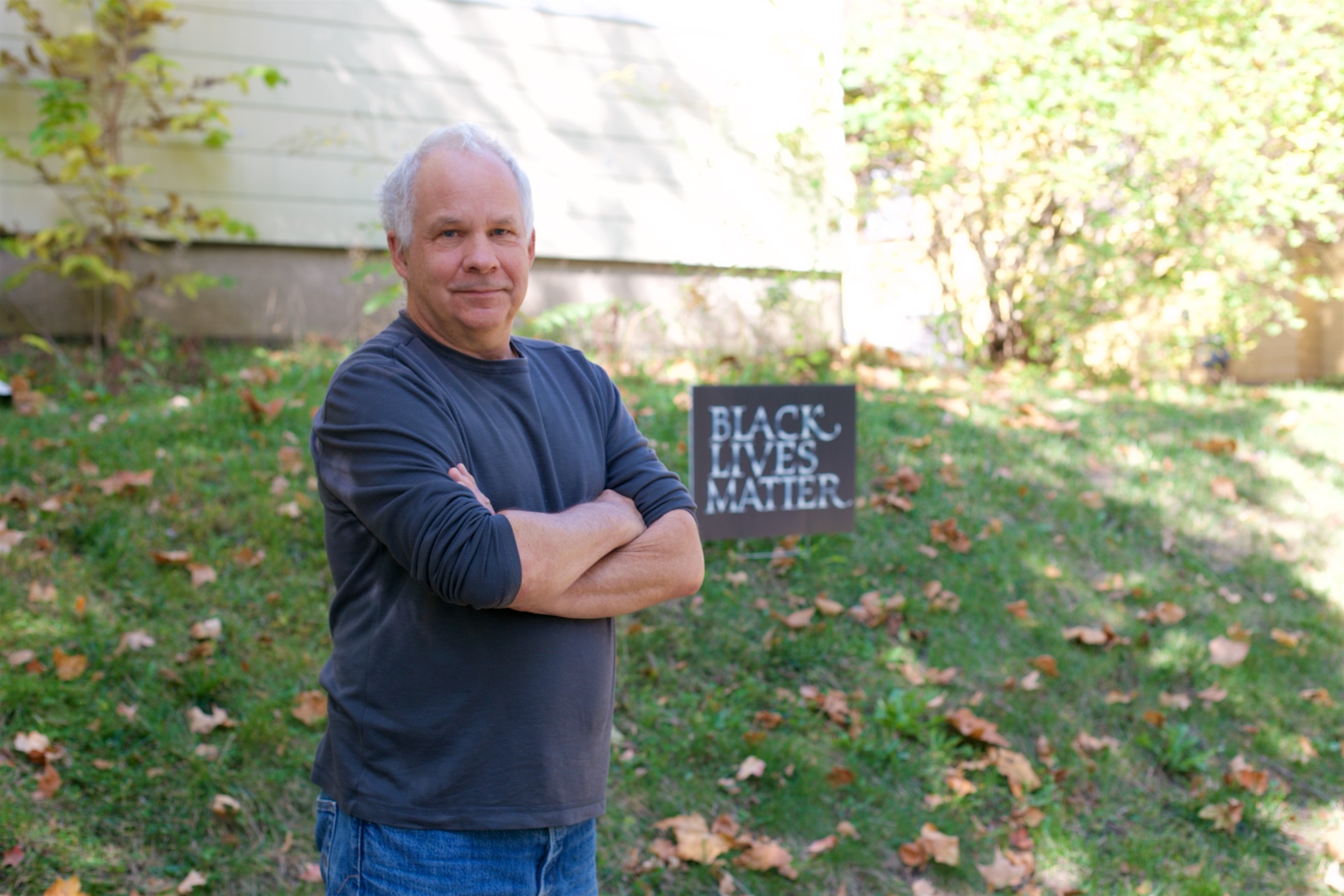Dara Eskridge and Colin Gordon
Photostory and photos of Dara Eskridge by Lindy Drew / Humans of St. Louis
Dara Eskridge: I’m an urban planner and architect by trade. I worked in St. Louis City government and the County government before going into the nonprofit world to a national community-building organization anchored here. Then I stepped into the role of Executive Director for Invest STL, an initiative that seeks to shift the region’s approach to neighborhood development towards one that centers racial equity and amplifies the desires, power, and agency of people within neighborhoods that have experienced decades of systemic disinvestment.
Colin Gordon: I’m a student of St. Louis and, although I’ve never lived there, I became interested in the place for its very stark historical patterns of racial segregation. I wrote a book called Mapping Decline: St. Louis and the Fate of the American City which tried to trace that story historically. That brought me into conversation with a lot of people in St. Louis, particularly because of a chain of events including the Kirkwood shootings in 2008 and the death of Michael Brown in 2014. I became involved in a number of local campaigns and consulted on some legal cases that came out of my earlier work. And that all animated a second book, Citizen Brown: Race, Democracy, and Inequality in the St. Louis Suburbs, which refocuses the attention to St. Louis County and some of the limits and constraints on African American citizenship there over time.
Photos of Colin Gordon by Mark Fullenkamp
I started looking at St. Louis because I’m interested in policy and how fragmented metropolitan areas do economic development.
Colin Gordon
I started looking at St. Louis because I’m interested in policy and how fragmented metropolitan areas do economic development. I mean, the answer is that they do it badly. That pressed me to want to investigate why the St. Louis region was so fragmented in the first place. That sent me tumbling back through a history in which most of that municipal fragmentation, particularly in the County, was driven by the desire to segregate. And this was accomplished by private development, incorporation, annexation, and the elaborate drawing of lines between municipalities, between school districts, and between the City and the County.
Dara: I grew up in University City, just north of Olive. If you’re familiar with U. City, there are two halves. I was on the half that to me, as a kid, felt more like St. Louis City. One set of grandparents and my church were in Wellston and Hillsdale, and my other grandparents were in Clayton and Ladue. My parents owned property in South City’s Fox Park and North City’s Hyde Park, which is the neighborhood I now live in. And my father is a realtor, so I have these really distinct memories growing up in the summers where I’d be in the backseat of his car going from one neighborhood to the next between South City, North City, and North County. So I had a lot of questions growing up, like, when we would go to Ted Drewes or visit some of my family who lived in wealthier parts of St. Louis County: “Why did these places look and feel so different than some other places?”
I went to University City Public Schools and, as school districts go within the region, that’s one of the more diverse until you get into the classrooms and look at the curriculum structure. I lived across the street from my elementary school, which was predominantly Black. I remember maybe three White kids there the whole time. It was a National Blue Ribbon School, which, for me, felt like that was the standard. I thought all schools were performing at that level. It wasn’t until I got older that I realized predominantly Black schools weren’t being elevated or honored in that way across the region. That was also when I realized people outside of my neighborhood and school community didn’t see my school as “good.” When I left my neighborhood school for the sixth-grade center, that’s where I had different course schedules and started changing classrooms. More and more, I found myself in classes where I was the only, or one of the few, Black people. And that was my experience going forward all through high school, skipping over undergrad — because I went to an HBCU — but then certainly in grad school at an Ivy League.
So it was interesting because I’ve definitely felt different school experiences and how power was held by a small population of people. I witnessed parents who would vouch or fight for their kids to be in certain courses. The majority of the school population had no idea certain kinds of offerings existed, and they certainly didn’t know how to advocate for them. I was lucky enough that my parents were aware and had the time and energy to pop up in a teacher’s classroom or principal’s office at any point to advocate for my siblings and me on everything from inclusion in more rigorous courses to classroom dynamics and after school opportunities.
Colin: I did all my schooling in a small town in Southern Ontario, which, for starters, was overwhelmingly White like all public schooling across Canada. There were relatively few private options, and they had relatively robust public funding that was not based on property taxes. So, the notion that there were “good schools” and “bad schools” was new to me when I moved to the U.S. And the idea that schools would depend so heavily on uneven local resources was surprising to me and historically troubling.
The idea that “good schools are in good neighborhoods” rests not only on high and stable property taxes in some neighborhoods and not others, but also on overwhelmingly single-family residential land use. So you get this pattern where people will actually say, “I bought a house there because the schools are good.” And, of course, that sort of has a reciprocal relationship. But I also think, and this goes back to what Dara said, that a good school is one in which the school policies themselves are equitable. Because what we’ve seen in our more recent history of public education in the U.S. is that segregation between schools has been gradually displaced by segregation within schools. We see it in things like disparate access to AP classes, tracking into remedial and gifted programs, and in the dynamics of how parents make demands and what parents are paying attention to.
“Yeah, it’s a block away from the house.” “Oh, is it a magnet? Is it a gifted school?” Then I explain, “No, it’s just a straight-up neighborhood school.” They’re like, “Well, did you run out of time to look at options?” And then they start to ask about crime and test scores and all those things.
Dara Eskridge
Dara: This is a conversation I have frequently because I have two small children who are four and five. We bought the house we bought because there’s a school at the end of the block. And I don’t think many people would think of this school as a conventionally “good” school. But, for us, the combination of the home and the school being close together and the opportunity to be part of the community here made that a good school. Now that we’ve experienced being part of the Clay Academy of Exploration and Civics community and its highly skilled and attentive teachers and administration, we feel even more that it is a quality school. So both of my children attend, and people freak out when I tell them. It starts off as kind of a gentle inquiry when they ask me where the kids go. And I’ll say, “Yeah, it’s a block away from the house.” “Oh, is it a magnet? Is it a gifted school?” Then I explain, “No, it’s just a straight-up neighborhood school.” They’re like, “Well, did you run out of time to look at options?” And then they start to ask about crime and test scores and all those things.
But, for us, a good school is a supportive school where we feel like our children can thrive socially, emotionally and academically, even if it means we have to supplement. Our kids are young right now, so luckily we don’t have to do anything too extensive. But we put them in sports and dance classes, and we take them to different places all around the region to introduce them to a variety of experiences. We spend a lot of time in libraries. We do a lot of at-home learning and creative stuff. And we add to their education with learning more about their own neighborhood so they build a relationship with the place and the people here. We walk them from one part to the next, saying, “Let’s look for the red leaves here. What color are these doors? Do you remember which house belongs to which neighbors or their names?” A child’s entire education can’t take place just in the classroom. And not everybody has the resources or the time, but when we do, we should invest in out of school education, no matter how “good” the school may be.
For us, a good school is also an environment where our children are cared for, where they can see people who look like them, where our kids and our family can have a voice within that institution, and where the institution itself is part of the community because it builds community in the spaces around it. The link between schools and neighborhoods is so important. It’s fluid — they go between each other, and one strengthens the other. And I don’t mean in the traditional way we think about it. It’s not just because a fancy neighborhood has really nice homes that it automatically contributes to the school. It’s the fabric that it weaves between the kids who live here, them being able to walk to a school that’s within blocks, and how that ultimately contributes back to the neighborhood versus all of our population emptying out during the day and, therefore, none of us are really spending a lot of time here at all.

What stands out to you when it comes to what’s happened to education in St. Louis and where things are today?
Colin: In some respects, it’s a familiar story with a St. Louis spin. We have metropolitan regions carved up into little municipal fragments, and the municipal fragments are then reflected in fragmentary school districts as well. So, the City of St. Louis is a district, and then there’s this patchwork of districts in the County. My argument has always been that all of those jurisdictions were created to play a role in the ongoing segregation by race and income of the local population. Segregation is this shape-shifting beast that moves from one mechanism to another. So you can’t have restrictive deed covenants anymore, but the work of that is then accomplished by suburban zoning. Schools play a very interesting role in this because they can anchor a neighborhood, in the same way Dara describes, but they can also impoverish a neighborhood.
Take a look at school closings across North St. Louis. It’s a mistake to see that as a reaction to population flight, like, “Oh, everyone moved to St. Charles County.” But, in fact, school policies drive some of that choice, and schools leapfrog the housing out into the cornfields and pull it away from the City and its inner suburbs. It’s a tragedy the way in which we allowed the gerrymandering of school districts to harden patterns of segregation rather than challenge them. All we could really do to challenge segregation in schools was move kids around because we’ve never taken a serious bite at the underlying problem of residential segregation.
With respect to property taxes affecting funding, in some respects it’s a simple story and in others it’s complicated. For most of the last century up until the 1970s, local property taxes absolutely determined the resources that local schools got. The best example of this is Kinloch in North County. In 1935, Kinloch was a large school district that included what is now the City of Berkeley. Well, the parents in Berkeley, who were overwhelmingly White, did not want to share their tax base with Kinloch in funding local schools even though the schools were segregated and the kids weren’t going to school together. So, Berkeley incorporated in a little donut around Kinloch, creating their own school district. And when they split in 1937, Kinloch became the poorest school district in the state of Missouri. And Berkeley became one of the richest. It was not until 1975 that the Department of Justice said, “This will not stand.” And they created the current Ferguson-Florissant School District.
We now have a situation in Missouri and other states where there is some commitment on the part of the state to equalize the underlying property differences. But they don’t do a very good job of that. There are still stark disparities from one municipality to another. And the poorer districts are still at a disadvantage because they have much higher property tax rates than the well-heeled districts. This is because they need to push their property tax rates as high as they can, as high as the state allows them, in order to raise even the most basic revenue. Meanwhile, the Clayton School District and Ladue School District don’t need a penny from the state, and they can raise three times as much money from the local property tax base.
Dara: It’s obviously a ridiculous cycle. Back to the link between neighborhoods and schools, we are condemning schools to being under-resourced and of lesser quality because we’re tying it to property values of neighborhoods or of a place. And then the property values are historically tied to where Black people are or are not. So we’re creating this terrible cycle that says Black children are undeserving of high-quality, high-resourced educational experiences and supporting that stance with the continued devaluation of properties in Black neighborhoods.
What’s especially galling about this is that we think about and talk about public education as something that overcomes inequality. It’s not supposed to widen it and cement it in place.
Colin Gordon
Colin: It has an enormous effect on students because they’re in this crazy cycle where schools are not getting the resources they need. And because they don’t get the resources they need, they become considered bad schools and schools to be avoided, so the communities around them suffer. This is represented by the struggle of some North County districts over the last decade like Wellston, Parkview Gardens, Normandy, and others that have gone through moments in which they’re unaccredited. So there was a time in 2014 when the City was just about to come out of being unaccredited as a district and, at that moment, 44% of African American kids in Greater St. Louis attended unaccredited schools and 2% of White kids did. That’s an enormous disparity. Dara captured it well. What’s especially galling about this is that we think about and talk about public education as something that overcomes inequality. It’s not supposed to widen it and cement it in place.
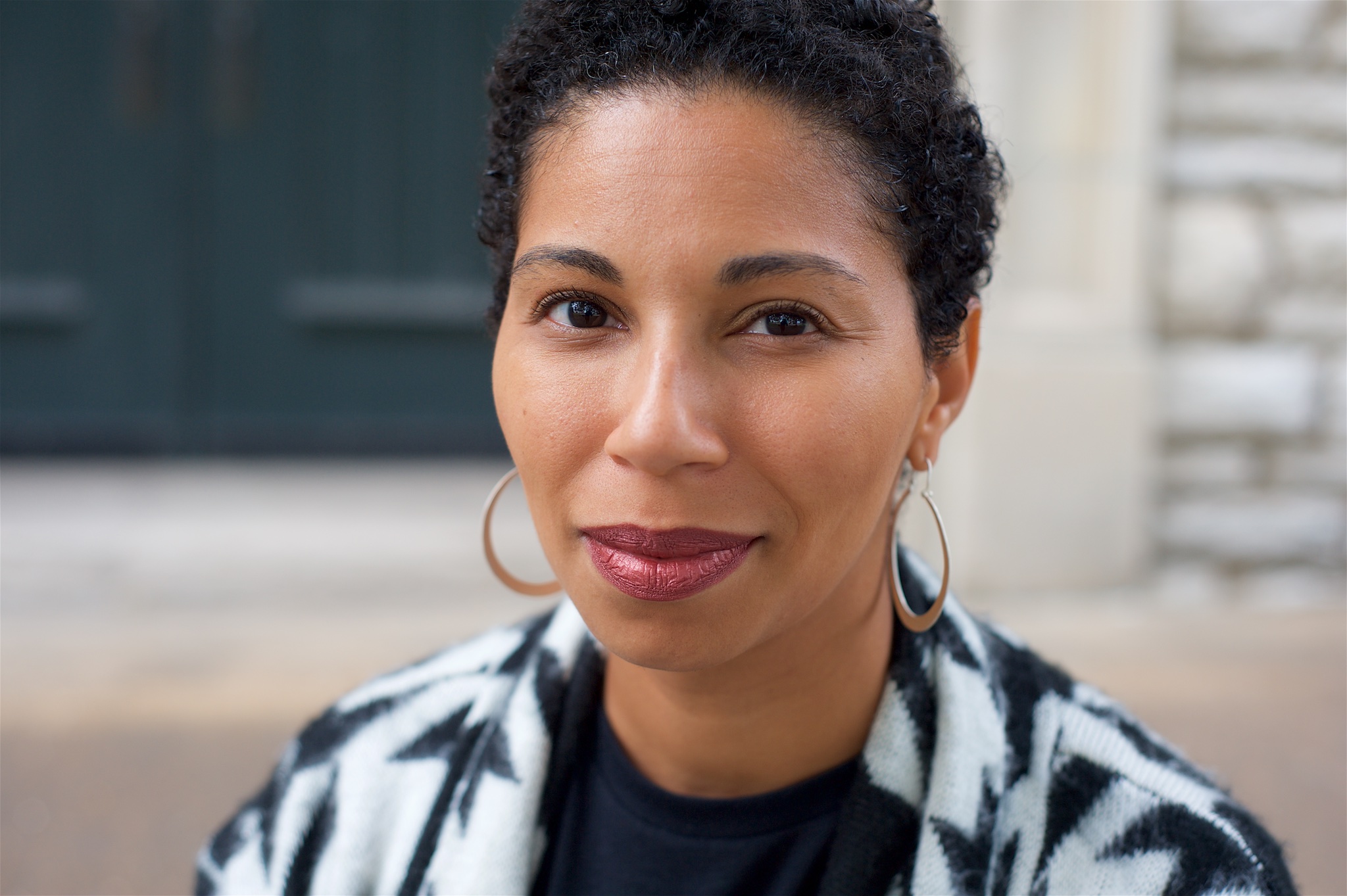
Dara: It’s not just about how the individual student is being affected but also the impact on families. When families no longer have a choice of a neighborhood school that their kid can walk to or very quickly reach by car and, instead, their child is waking up at 4:30 in the morning to get to a school by an hour-long bus ride that they’re having to replicate on the back end of the school day, too — that’s then stealing time from that family to be together. It’s ripping at the social fabric of a family unit. It’s also decreasing the opportunities for families to be in their own communities. So there’s that loss of connection to their own home, their own people, and their own place.
Then when families are understandably exhausted, they try to figure out a different housing situation. So sometimes kids go live with other relatives, they’re no longer living with mom and dad, and that again disrupts the family unit. In other situations, families decide to pick up and move to where the school is. But, more often than not, that means they are renting a home or an apartment in a perceived higher-quality school district, which means now we’ve lost an opportunity for them to gain wealth, because then they can’t afford to buy a home there and they’re using whatever disposable income they have on a property they won’t own. And that ultimately steals from the neighborhood they first lived in. It’s not just about the individual student. We should definitely prioritize the student’s wellbeing and education. We should also understand the impacts of inequitable school structures, funding formulas, and all of that are layered and have a terrible ripple effect on our entire community and economy for generations.
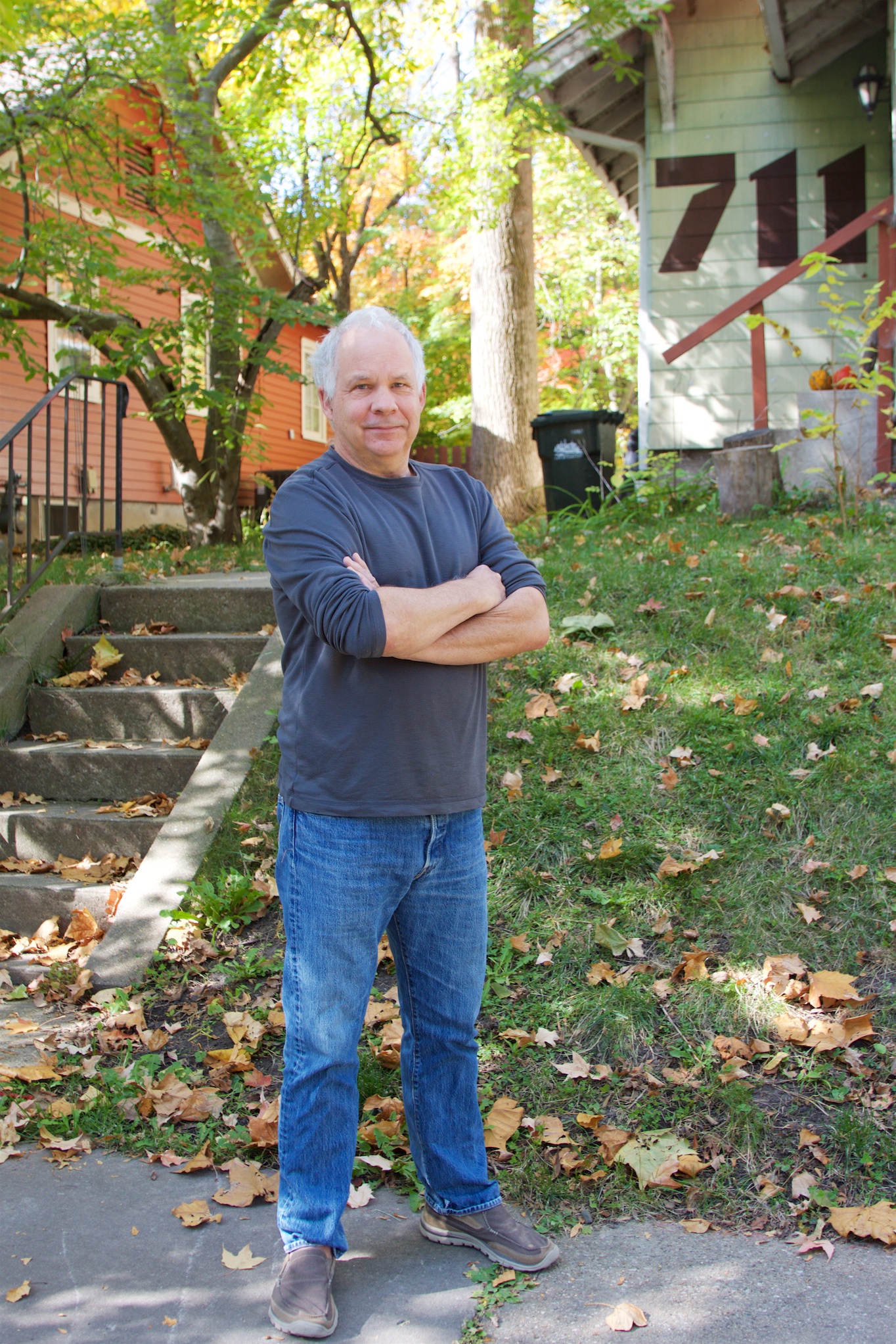
Colin: You can’t wave a magic wand and say, “Well, if we do this, then everything will be better.” The thing about schools and neighborhoods and segregation is they’re not just the result of decisions people have made, but they’re built. They have foundations in the ground. And if you said overnight, “We’re going to pool all of the local tax resources and give it to the schools most in need,” it would make some difference, but not a lot. Greater Minneapolis, for example, has done this. They put all of the property taxes going to the schools in a pool and distributed them on an equity-based formula. But the schools can’t solve all of the problems. They can’t change patterns of racial segregation and housing. They can’t change the mismatch between where people live and where they have opportunities to work without moving kids around and creating all the other burdens on families and neighborhoods that Dara outlined. We’ve done a lot of damage for a long time and no magic formula on tax distribution is going to change that.
What is the impact of not naming race as the cause of our inability to improve educational outcomes for children?
Dara: The impact is that we end up with a huge slate of programmatic fixes that are being attempted right now that aren’t getting to the root cause. So we have coat drives and feeding programs and all of these things that aren’t actually dealing with the issue of structural racism within the education funding and resourcing model for our schools. That’s why we’re not seeing a big spike in positive outcomes at the school level. Because we are not trying to rectify that kind of original sin. And I hear Colin when he says there’s no magic wand and that redistributing resources to the schools that need it most would help, but not a lot. Still, let’s at least start there. We absolutely won’t get anywhere if we don’t do that first.
Education comes up a lot in my work. We’re always trying to be careful to stay in our lane of community development because we want to be clear about where we are and are not experts, but it’s so hard to keep these two things separate. When we think about neighborhood planning processes and a community envisioning what their future looks like and conversations inevitably around gentrification and displacement, there’s always a conversation around schools, like, “We’re not going to be able to get other people to move here because the schools are no good.” And that always gives me pause because it’s like, wait. Shouldn’t schools be great for the children who are here right now? What have we all done to a community to make them feel that they’re undeserving of great schools regardless of who’s coming or going?
As we think about our evolving investment model at Invest STL, we’re starting to ask more and more questions. What does it look like if every time we invest in a neighborhood, it goes beyond just the Community Development Corporation on the ground or the neighborhood planning process to an investment in each and every household? Another component is, how do we support families within neighborhoods where there are seemingly low-performing or perceived less-desirable schools? How do we help them gain wealth so they’re more firmly rooted in place and own something there? That way, we fortify the fabric that is already strong, and the outside perspective of that place, that community, and its assets is also transformed. Because now we’ve got a network of people who have tangible ownership within their place, and that starts to change how external people view the place and its assets, including the schools.
How do business property taxes fall into this conversation about school funding?
Colin: One of the ongoing challenges is that commercial assessments fall alongside residential assessments. So, North County is struggling with property values, but it’s also struggling to maintain its retail properties and the like. And the strategy for overcoming that is counterproductive for schools because the most common mechanism for trying to attract business investment is to basically rob from the schools’ revenue stream so a municipality under a tax increment financing (TIF) deal grabs all of the property tax revenue and uses it for the development on the rather thin promise that, in 23 years, this property will pay more in property taxes than it does now. But for the duration of the deal, the schools get none of the money even if the property value increases. So school boards and districts could be more courageous about digging in against the way the local property tax is used to galvanize business investment because it doesn’t work to their benefit.
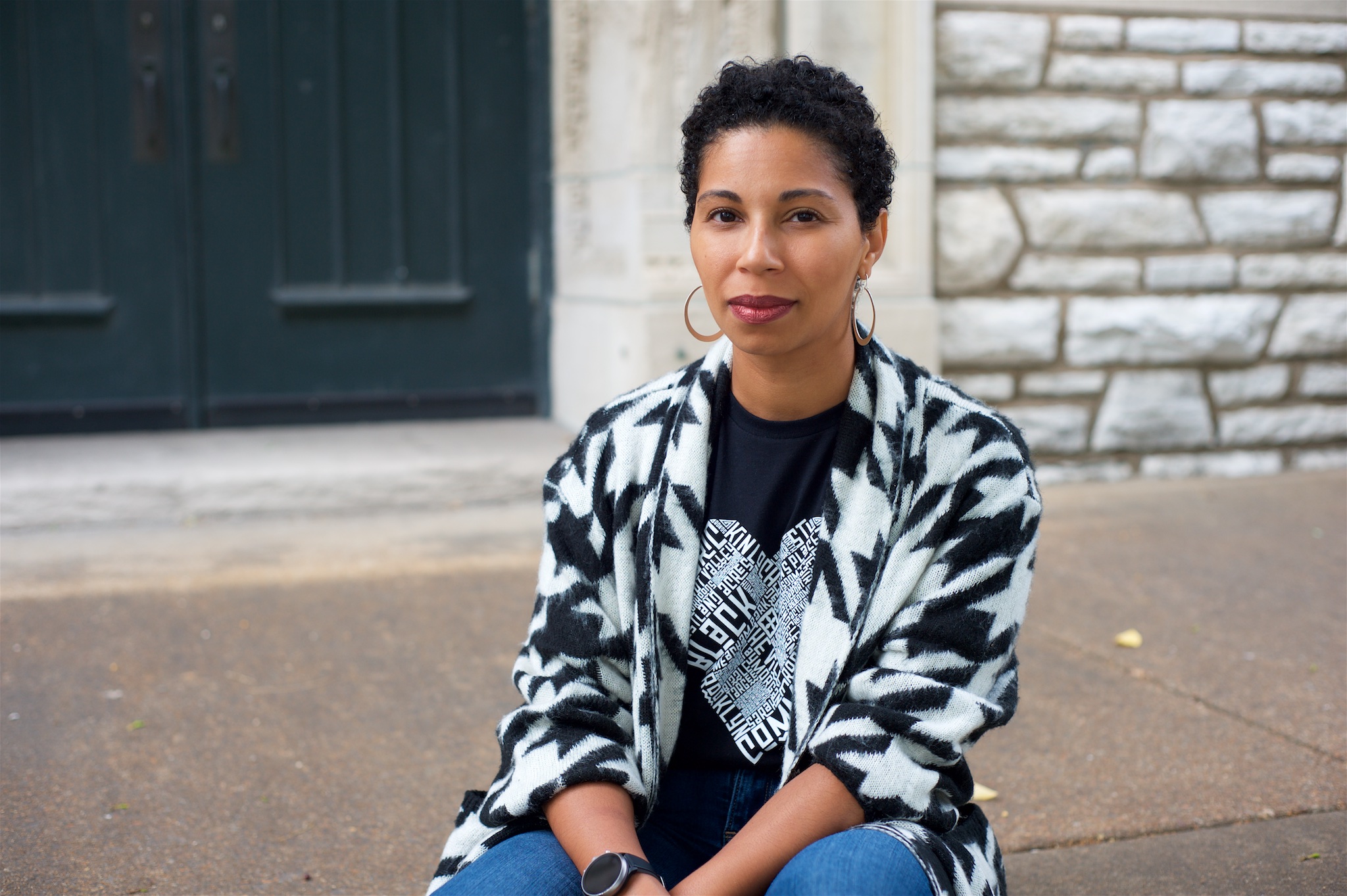
In what ways do White parents get in the way of the advancement of school integration and educational equality?
Dara: Actually, I think it’s worthwhile to examine our assumptions around the advancement of integration as the most promising path for educational equality, especially since integration is often only allowed to go one way — Black and Brown bodies into overwhelmingly White spaces. This has been highlighted most recently by the podcast Nice White Parents. And when integration does go in the rare opposite direction, as the podcast chronicles at a point, it’s less integration of White families into a Black and Brown school and more of a cultural and curriculum takeover leading to pre-existing students and their families feeling like sudden outsiders who are lesser than.
I have a reaction to the concept of school integration similar to when people say “mixed-income communities.” There is something baked in there that says proximity to Whiteness must be promoted as the primary cause or condition for Black kids to succeed, rather than repositioning integration as only a potential effect of first-rate school environments.
Dara Eskridge
I have a reaction to the concept of school integration similar to when people say “mixed-income communities.” There is something baked in there that says proximity to Whiteness must be promoted as the primary cause or condition for Black kids to succeed, rather than repositioning integration as only a potential effect of first-rate school environments. I’d like for us to get off of school integration as THE path forward and accept and advance the position that kids, no matter where they are and what they look like, are capable of achieving and deserve a high-quality education. We shouldn’t have to pick them up and put them somewhere else to get the resources they need. If we focus solely on school integration, particularly that of the Black towards White model, we’re missing the fight and still avoiding tackling the racist undergirdings of our inequitable education landscape.
Colin: There’s a good podcast called School Colors about the schools in New York City that very self-consciously became Black power, Black nationalists schools in the 1970s and 1980s and actually took the view that there’s no magic statistic to integration that’s going to fix everything. Instead, it’s about investing in the schools and kids where they are rather than moving them around. I just read a book with one of my classes that basically traced the same history in Nashville about how they were, like a lot of districts, chasing the goal of integration set by Brown vs. Board of Education. And they accomplished it. They got every school to a target threshold of 15% Black and 85% White students. But the Black kids weren’t any better off, partly because what they did was import the segregation into the schools. White kids and Black kids just ended up in different classes on different tracks with different expectations.
Dara: This actually speaks to the harm of not naming structural racism as a root cause. Integration also plays into that as well. We’re not willing to recognize that solely focusing on integration of schools is an inherently racist idea because it is premised on this concept that there is an inferior component that needs some kind of normalizing or conditioning so that it can succeed, and therefore we have to move it to a higher succeeding population and setting.
Colin: And the best illustration of that is the stark racial disparities in school discipline present in integrated schools. Segregation and the assumptions behind it migrates into school policies. I would also offer that a lot of the frustration rests on all of the weight we put on schools to fix problems they don’t create. Part of that is just not thinking about schools, schooling, and educational policy as a silo, but thinking about everything else going on. And to go back to when we started talking about what role schools play in their neighborhoods, we ended up in this pattern by which schools chase well-resourced, often White parents around a metropolitan area instead of seeing schools as neighborhood anchors. And the irony of this is the way we talk about “eds and meds” in conventional economic development and say, “If you get a university there, that will anchor your neighborhood.” Well, why not view an elementary school in the same way? Because on a smaller scale, it’s much more impactful. So rather than being quick to close a school because neighborhood population is dropping, make an investment in the school and that will allow the neighborhood to rebound. It’ll never rebound without the school.
Dara: Saint Louis Public Schools held their community visioning workshops in early 2020. As usual, because they have dwindling resources and dwindling school populations, they’re looking at closing more and more buildings. And what you heard loud and clear from North City neighborhoods was, “Do not touch our schools. We cannot afford to have yet another vacant school building in our neighborhood.” The thing about schools being a neighborhood anchor is that it’s not dependent on somebody acknowledging that. You don’t have to recognize it as a neighborhood anchor. It is, no matter what you think about it. If you invest in it, it’s a positive anchor. If you don’t, it tanks a neighborhood. So, I totally agree that we have to be in the business of investing in these schools if, for nothing else, just to keep these neighborhoods afloat and give them a real fighting chance to thrive. If we don’t do that, if we have these huge buildings emptying out block after block and we force our families to seek costly solutions outside their neighborhoods, we are damning all of North City. We really are.
What is your vision for an equitable #STL2039?

Colin: I often answer questions like this by saying, “I’m a historian. It’s not my area of expertise.” I don’t want to offer a trite answer because we all know what a just and equitable city might look like, and we know to some degree why we’re not there. But, I don’t think we’re that close to knowing how to get there. In my research, I’ve argued that fragmentation and localism in service of segregation have done irreparable damage to Greater St. Louis. Overcoming that by sharing more decisions and resources at the regional level would make a difference. I also think it would make a difference to do that laterally across policy domains and not think about schooling and economic development in silos but understand the connections between them. That’s not in any way an original idea, but it’s not put into practice partly because of the constraints on these fragmented political institutions and partly because of the lack of resources.
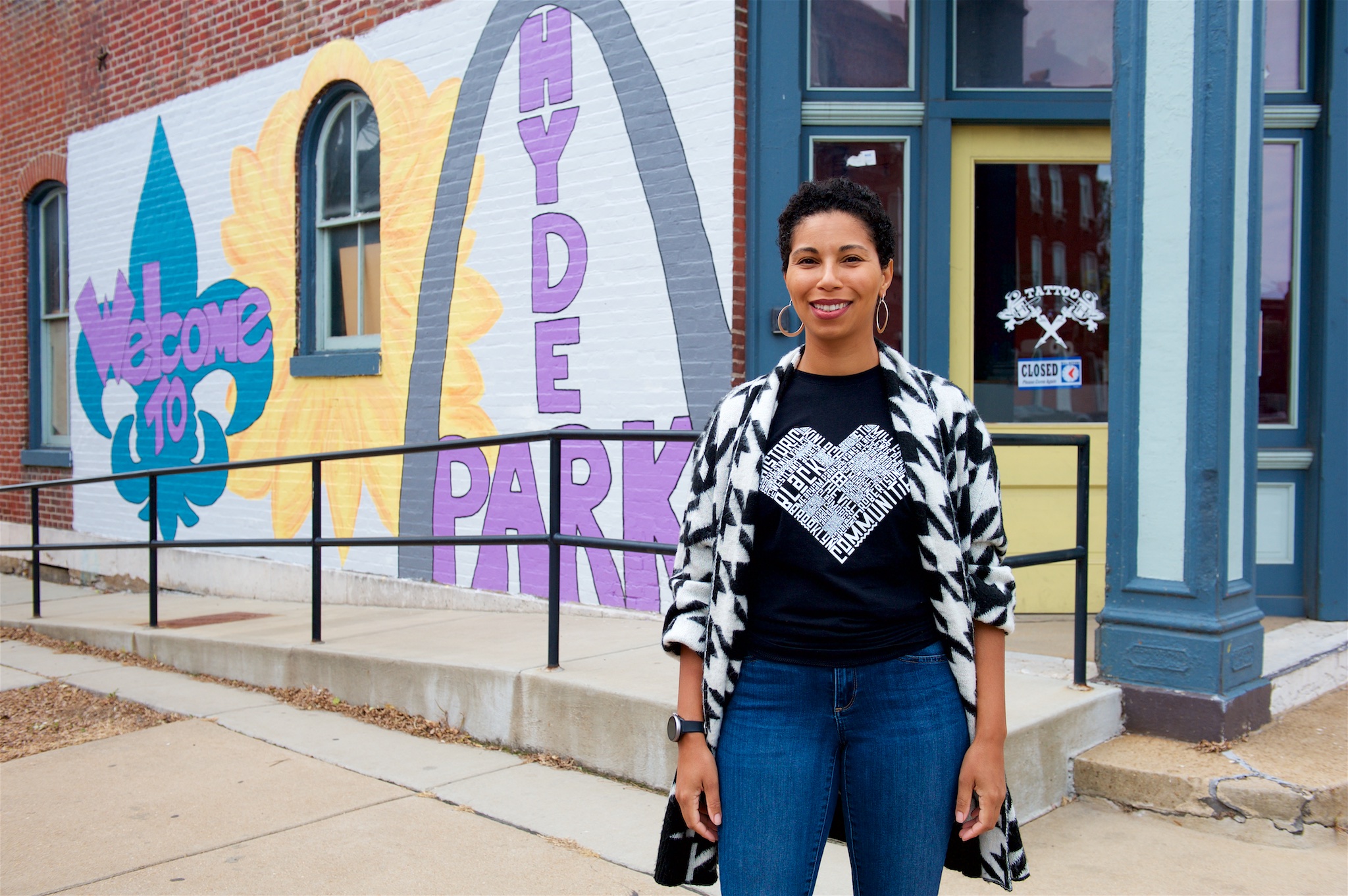
Dara: If I think about my kids in 2039, it would look like my now newly minted adult children want to stay here instead of fleeing, as many of my friends have, because they feel like it’s such a hard space to be Black and professional in. I hope that it’s a time where it doesn’t feel radical or unsafe to be Black and excellent and in positions of power. Mostly because we, the big collective WE, didn’t bat an eye to invest in Black people and Black neighborhoods because we understand that it’s owed versus doing all the mental gymnastics that we’re doing right now, trying to find every way and reason not to make the investment.
Colin Gordon
teaches history at the University of Iowa, and is the author of Mapping Decline: St. Louis and the Fate of the American City and Citizen Brown: Race, Democracy, and Inequality in the St. Louis Suburbs
Dara Eskridge
Executive Director of Invest STL


